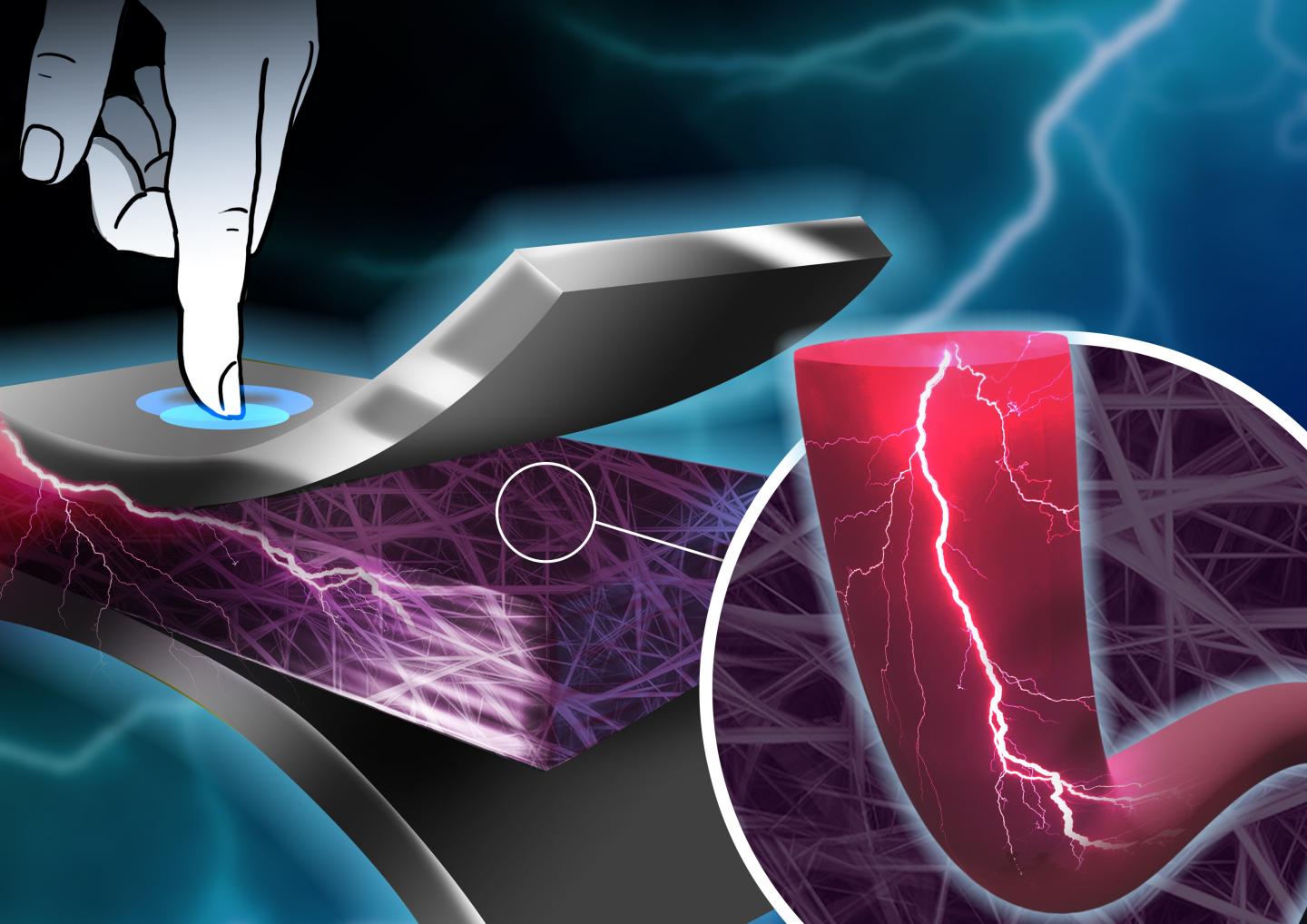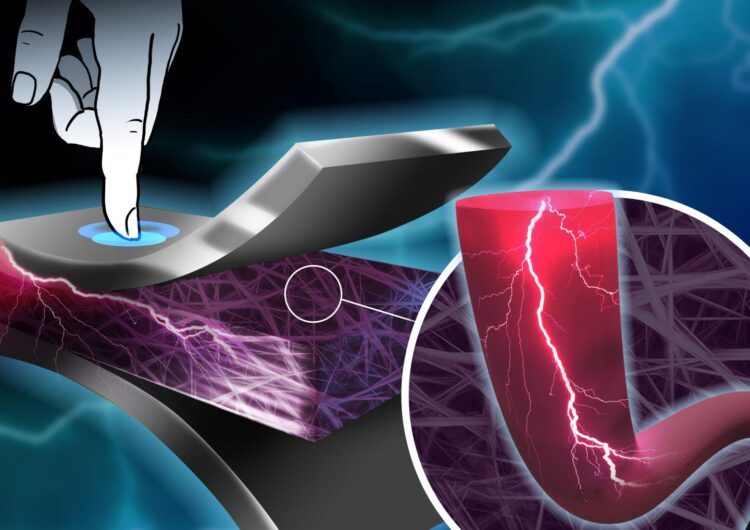Scientists have found a way to generate electricity from nylon, raising hopes that the clothes on our backs will become an important source of energy.

Credit: Katharina Maisenbacher, Max Planck Institute
Researchers have found a way to produce nylon fibres that are smart enough to produce electricity from simple body movement, paving the way for smart clothes that will monitor our health through miniaturised sensors and charge our devices without any external power source.
This discovery – a collaboration between the University of Bath, the Max Planck Institute for Polymer Research in Germany and the University of Coimbra in Portugal – is based on breakthrough work on solution-processed piezoelectric nylons led by Professor Kamal Asadi from the Department of Physics at Bath and his former PhD student Saleem Anwar.
Piezoelectricity describes the phenomenon where mechanical energy is transformed into electric energy. To put it simply, when you tap on or distort a piezoelectric material, it generates a charge. Add a circuit and the charge can be taken away, stored in a capacitor for instance and then put to use – for example, to power your mobile phone.
While wearing piezoelectric clothing, such as a shirt, even a simple movement like swinging your arms would cause sufficient distortions in the shirt’s fibres to generate electricity.
Professor Asadi said: “There’s growing demand for smart, electronic textiles, but finding cheap and readily available fibres of electronic materials that are suitable for modern-day garments is a challenge for the textile industry.
“Piezoelectric materials make good candidates for energy harvesting from mechanical vibrations, such as body motion, but most of these materials are ceramic and contain lead, which is toxic and makes their integration in wearable electronics or clothes challenging.”
Scientists have been aware of the piezoelectric properties of nylon since the 1980s, and the fact that this material is lead-free and non-toxic has made it particularly appealing. However, the silky, man-made fabric often associated with cheap T-shirts and women’s stockings is “a very difficult material to handle”, according to Professor Asadi.
“The challenge is to prepare nylon fibres that retain their piezoelectric properties,” he said.
In its raw polymer form, nylon is a white powder that can be blended with other materials (natural or man-made) and then moulded into myriad products, from clothes and toothbrush bristles to food packaging and car parts. It’s when nylon is reduced to a particular crystal form that it becomes piezoelectric. The established method for creating these nylon crystals is to melt, rapidly cool and then stretch the nylon. However this process results in thick slabs (known as ‘films’) that are piezoelectric but not suited to clothing. The nylon would need to be stretched to a thread to be of woven into garments, or to a thin film to be used in wearable electronics.
The challenge of producing thin piezoelectric nylon films was thought to be insurmountable, and initial enthusiasm for creating piezoelectric nylon garments turned to apathy, resulting in research in this area virtually grinding to a halt in the 1990s.
On a whim, Professor Asadi and Mr Anwar – a textile engineering- took a completely new approach to producing piezoelectric nylon thin films. They dissolved the nylon powder in an acid solvent rather than by melting it. However, they found that the finished film contained solvent molecules that were locked inside the materials, thereby preventing formation of the piezoelectric phase.
“We needed to find a way to remove the acid to make the nylon useable,” said Professor Asadi, who started this research at the Max Planck Institute for Polymer Research in Germany before moving to Bath in September.
By chance, the pair discovered that by mixing the acid solution with the acetone (a chemical best known as a paint thinner or nail varnish remover), they were able to dissolve the nylon and then extract the acid efficiently, leaving the nylon film in a piezoelectric phase.
“The acetone bonds very strongly to the acid molecules, so when the acetone is evaporated from nylon solution, it takes the acid with it. What you’re left with is nylon in its piezoelectric crystalline phase. The next step is to turn nylon into yarns and then integrate it into fabrics.”
Developing piezoelectric fibres is a major step towards being able to produce electronic textiles with clear applications in the field of wearable electronics. The goal is to integrate electronic elements, such as sensors, in a fabric, and to generate power while we’re on the move. Most likely, the electricity harvested from the fibres of piezoelectric clothing would be stored in a battery nestled in a pocket. This battery would then connect to a device either via a cable or wirelessly.
“In years to come, we could be using our T-shirts to power a device such as our mobile phone as we walk in the woods, or for monitoring our health,” said Professor Asadi.
###
Piezoelectric Nylon-11 Fibers for Electronic Textiles, Energy Harvesting and Sensing is published in Advanced Functional Materials.
Media Contact
Vittoria D’Alessio
[email protected]
Original Source
https:/
Related Journal Article
http://dx.






